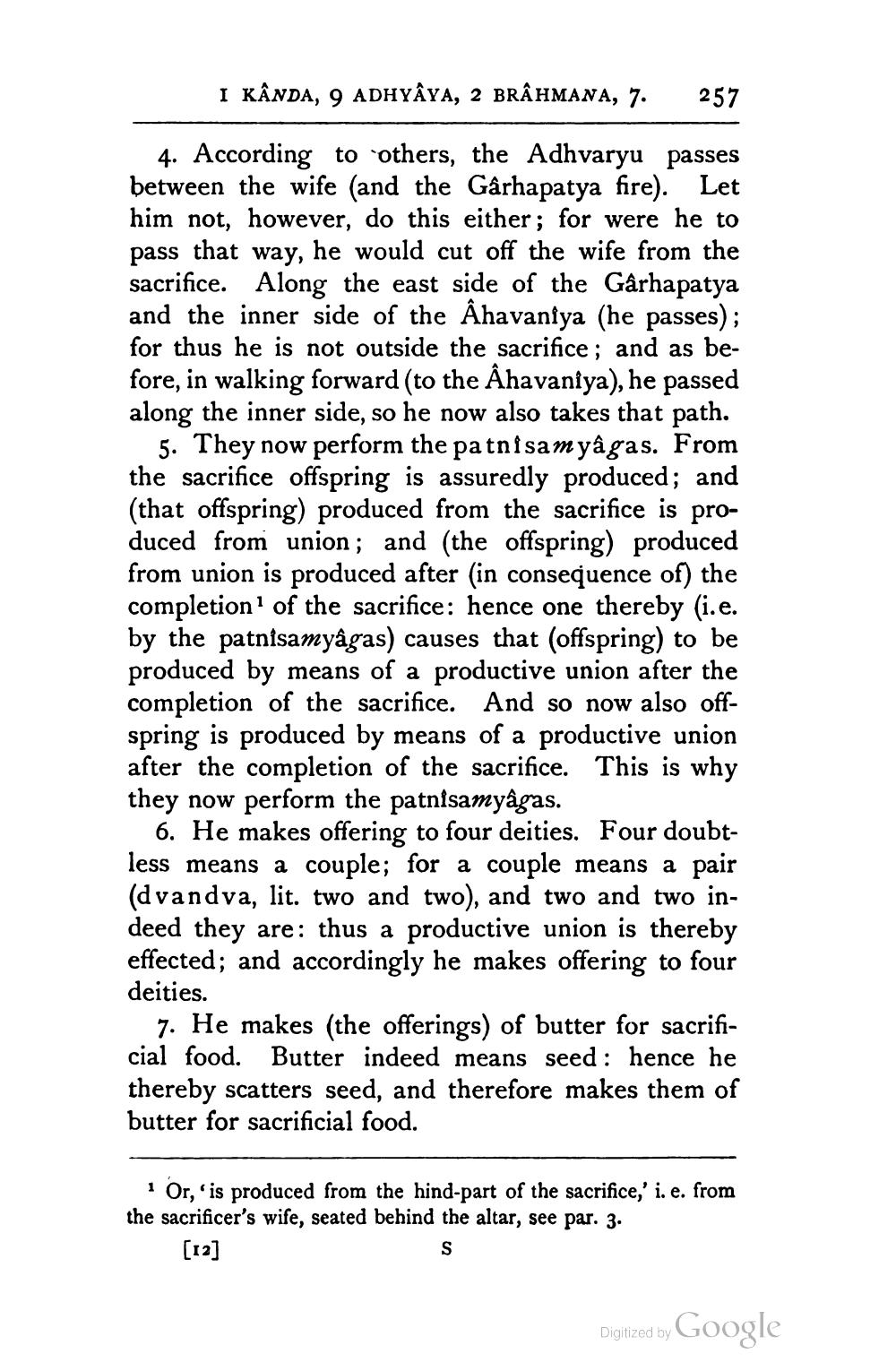________________
I KÂNDA, 9 ADHYAYA, 2 BRÂHMANA, 7.
257
4. According to others, the Adhvaryu passes between the wife (and the Gârhapatya fire). Let him not, however, do this either; for were he to pass that way, he would cut off the wife from the sacrifice. Along the east side of the Gârhapatya and the inner side of the Ahavaniya (he passes); for thus he is not outside the sacrifice; and as before, in walking forward (to the Ahavaniya), he passed along the inner side, so he now also takes that path.
5. They now perform the patnisam yâgas. From the sacrifice offspring is assuredly produced; and (that offspring) produced from the sacrifice is produced from union; and (the offspring) produced from union is produced after (in consequence of) the completion of the sacrifice: hence one thereby (i.e. by the patnisamyågas) causes that (offspring) to be produced by means of a productive union after the completion of the sacrifice. And so now also offspring is produced by means of a productive union after the completion of the sacrifice. This is why they now perform the patnisamyâgas.
6. He makes offering to four deities. Four doubtless means a couple; for a couple means a pair (dvandva, lit. two and two), and two and two indeed they are: thus a productive union is thereby effected; and accordingly he makes offering to four deities.
7. He makes (the offerings) of butter for sacrificial food. Butter indeed means seed: hence he thereby scatters seed, and therefore makes them of butter for sacrificial food.
Or, is produced from the hind-part of the sacrifice,' i. e. from the sacrificer's wife, seated behind the altar, see par. 3.
[12]
Digitized by Google




